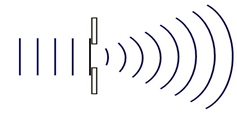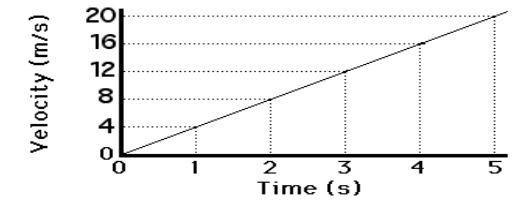A factor that changes in an experiment from manipulation of the independent variable is the ____.
a. control
b. constant
c. hypothesis
d. dependent variable
D. dependent variable
What does this diagram represent?

Nuclear Fission
Which group of elements on the periodic table has 2 valence electrons?
A. Group 1
B. Group 2
C. Group 7
D. Group 8
A. Group 2
Which is an explanation of why solid copper wires are effective conductors of electricity?
A. electrons move easily within the wire
B. copper does not contains any protons
C. copper contains the same number of protons and neutrons
D. protons and electrons tend to cluster at opposite ends of the wire
A. electrons move easily within the wire
What is instantaneous Velocity?
The velocity of an object at a specific or exact moment in time.
The property of a material which describes how fast thermal energy transfers from one end of a material to the other end is called.
A. thermal essence
B. thermal equilibrium
C. thermal resonance
D. thermal conductivity
D. thermal conductivity
How does Iodine - 131 compare to the most common form of Iodine (Iodine - 126)?
A. iodine -131 has extra electrons
B. iodine -131 has extra neutrons
C. iodine -131 has extra protons and neutrons
D. iodine -131 has extra protons and electrons
B. iodine -131 has extra neutrons
Material that has a definite volume but no definite shape is a
A. Liquid
B. Solid
C. Gas
D. Plasma
A. Liquid
Which of the following is a chemical change?
A. Ice melting
B. Ice being carved
C. Water Boiling
D. Water separating into hydrogen and oxygen
D. Water separating into hydrogen and oxygen
How do you calculate Average Speed?
Give the formula
Speed = Distance divided by time
V = D / t
According to the periodic law, which element would most likely have similar properties to potassium?
A. Argon (Ar)
B. Chlorine (Cl)
C. Sodium (Na)
D. Calcium (Ca)
C. Sodium (Na)
In a tug of war, one team is pulling with a force of 100N to the left, the other team is pulling 80N to the right. What is the Net Force (magnitude and direction)?
A. 20 N to the left
B. 180 N to the left
C. 20 N to the right
D. 80 N to the right
A. 20 N to the left
A sailboat is moving at a constant velocity of 8 km/h eastward.

Which direction would you draw a vector for the friction force of the boat against the surface of the water?
A. to the East
B. to the West
C. water has no friction
D. upwards, away from the water
B. to the West
An ambulance siren sounds different as it approaches you then when it moves away from you. What term would you use to explain hos this happens?
A. Wave Refraction
B. Doppler Effect
C. Wave Diffraction
D. Wave Refraction
B. Doppler Effect
How is distance different from displacement?
Distance is the total amount an object has traveled. Always positive
Displacement is the amount away from the origin. Can be positive or negative
The element iron has seven naturally occurring isotopes. Which of the following describes the relationship of these isotopes?
- same mass, same atomic number
- different mass, same atomic number
- same mass, different atomic number
- different mass, different atomic number
B. different mass, same atomic number
Which of the following types of waves do not require a medium?
A. sound waves
B. seismic waves
C. ocean waves
D. electromagnetic waves
D. electromagnetic waves

This diagram shows which of the following wave behaviors?
A. reflection
B. refraction
C. diffraction
D. absorption
C. diffraction
Which elements are least likely to react with metals?
A. nonmetals
B. other metals
C. noble gases
D. transition metals
C. noble gases
Wave in which matter in the medium moves back and forth in the same direction the wave travels.
Compressional wave
A beaker contains 0.32 L of water. The beaker’s volume is ____ milliliters.
a. 3.2
b. 0.032
c. 32
d. 320
D. 320 mL
The path of a projectile is ____.
a. straight
b. always horizontal
c. always vertical
d. curved
D. curved
Which of the following equations is correctly balanced for the decomposition of hydrogen peroxide?
A. H2O2→2H2O+O2
B. 2H2O2→2H2O+O2
C. 2H2O2→2H2O+2O2
D. 2H2O2→3H2O+O2
B. 2H2O2→2H2O+O2
Current that does not reverse direction is called ____.
a. direct current
b. magnetic current
c. alternating current
d. circuit current
A. direct current
What is the acceleration of the object depicted in the graph?

- 8 m/s2
- 4 m/s2
- 1 m/s2
- 0 m/s2
B. 4 m/s2